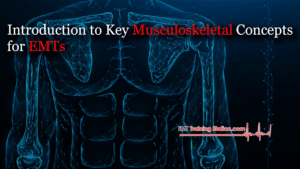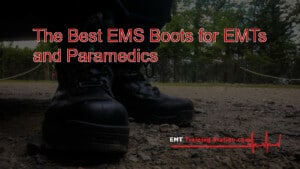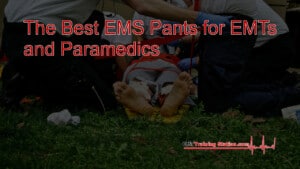What is EMT Training?
EMS, or Emergency Medical Service, is a rewarding career. There are very few career choices a person can take that allows them to make positive impacts in the lives of people. As an EMT or Paramedic, you will be called upon to make crucial decisions that will affect the outcome of your patient in a prehospital setting.
Without the dedicated men and women in the EMS field, the mortality of patients in the field would be drastically lower without immediate prehospital interventions of emergency personnel.
An Emergency Medical Technician is paid to render aid in emergency situations. Whether it’s trauma, heart attacks, facility transfers or on a scene with a motor vehicle accident – an EMT’s duty is an extremely important one, which is why the emergency medical field is one of the most popular among job seekers today.
Most EMS workers are employed by private companies, others by city municipalities. No matter what part of the United States you may live in, there’s always a demand for skilled lifesavers, however, training requirements and regulations vary from State to State in the U.S.
The job description for an EMT will vary depending on the level of EMT license is possessed by the technician. For example, an EMT Basic will have different sets of responsibilities than an EMT-Paramedic – who is able to render advanced care and give medications in a prehospital setting. Some EMTs will be on Ambulances, while others may ride in fire trucks on a fire department.
Typically, however, the job entails:
- Identifying medical emergencies.
- Improving patient survival rates.
- Communicating with Doctors via radio or phone patch.
- Assisting people during life threatening situations when they arise.
- For more information about the EMT job description, click here.
The demand for EMTs is extremely high. As long as you meet the qualifications and have completed the proper training (and again, training requirements depend on your geographical location), you have a great chance of getting hired. Whether it’s through a private company looking to hire their own EMT Providers or a city municipality that is hiring a force to render emergency care within city limits, your chances of getting hired are excellent.
BLS.gov EMS Jobs Report 2021
2021 Median Pay
Education Level
Work Experience Requirement
On the Job Training
Number of Jobs 2021
Job Outlook, 2021-31
Employment Change, 2021-31
$36,930 per year or $17.76 per hour
Postsecondary nondegree award
None
None
261,000
7% (As fast as national average)
17,900
Reasons Why Yout Should Train to be an EMT
Imagine being the person who answers the call in the darkest hours – that’s what Emergency Medical Technicians (EMTs) do every day. They’re not just employees in the healthcare system; they’re life-savers, comfort-givers, and community heroes.
Find out what the base requirements are to become an EMT. States usually have additional or different requirements.
EMS can lead to interesting career choices. Find out what sort of careers and money you can make as an Emergency worker.
Your road might start with becoming an EMT, but you will quickly discover that the path doesn’t end there.
EMT’s, as well as Paramedics, can go onto a variety of fields such as: Physician Assistant, Fire Fighter, Medical Doctor, and many more options.
Read about the exciting career fields that open up once you become a licensed Emergency Medical Technician.
There are two main ways to attend EMT school. One is to attend class at a college or university and pursue EMS as part of a degree program.
The other is to attend a specialized training center. Both options have their own sets of pros and cons. Find out what type of school will suit your needs.
A detailed look at the differences between EMTs and Paramedics. Discover salary differences, job requirements, and training differences.
Think of becoming a Paramedic as upgrading the skill set of the EMT.
An in-depth look at everything a prospective medic will need to know about the rigorous training protocols to become licensed as an EMT-Paramedic.
This article covers a basic outline of what Paramedic school entails as well as what to expect from your instructors.
It gives a brief list of some of the drugs, as well as, an overview of the testing methods and overall class structure.
EMT Training Resources
A collection of study tips and techniques to pass the NREMT certification exam. This is a tough exam, and many EMT candidates do not come from a college background.
In college, students learn effective study tips and this article helps to bridge the gap by introducing study techniques that college students learn such as “chunking”.
Your study environment is just as important as the material you are studying.
In this article, we explore some of the best places you can go to study that produce an environment that will foster your learning.
A collection of resources to aid EMT and Paramedic students to study for their classes and make the transition to licensed professionals easier. This includes mostly free and a few paid options.
Lung sounds are very important to the daily treatment of patients. Different lung sounds mean different ailments. Learn about the 8 main types of lung sounds an EMT will encounter.
This article has sound examples and explanations of each sound. As a bonus, the article also covers how to perform a complete respiratory examination.
Anatomy and Physiology For EMTs
A collection of articles written to help perspective EMTs understand anatomy. These articles are meant to supplement not replace actual instruction.
Musculoskeletal Concepts

Introduction to Key Musculoskeletal Concepts for EMTs
The human body, a marvel of biological engineering, is made up of several intricate systems working in harmony to enable life as we know it. The musculoskeletal system is one such essential system, a complicated network of bones, muscles, tendons,
Neurological Concepts

Neurological Assessment for EMTs
This article is for informational purposes only and is NOT a replacement for proper education and training. Table of Contents Overview and Function of EMTs in Neurological Emergencies Emergency Medical Technicians (EMTs) frequently face difficult situations when responding to neurological
Cardiovascular Concepts

The Cardiovascular System for EMTs: Interventions and Heart Conditions
Welcome to an in-depth exploration of the cardiovascular system and its significance in the field of emergency medical services. As an Emergency Medical Technician (EMT), your knowledge of this intricate system, the conditions that can arise, and the interventions necessary
Traumatic Emergencies

On the Scene: Prehospital Care for Electrical Burns for EMTs
In the world of emergency medical services, encountering victims of electrical burns presents a unique set of challenges. As a veteran emergency medical technician (EMT), I’ve seen firsthand the critical importance of prompt and effective prehospital care in these situations.
EMS Acronyms

EMT Essentials: Mastering SAMPLE History and OPQRST Pain Assessment Techniques
In the fast-paced and critical world of emergency medical services, EMTs are often the first healthcare professionals to interact with patients in distress. The initial assessment of a patient can be crucial in determining the course of treatment and can

DCAP BTLS
This article is for informational purposes only. It may contain graphic images, reader discretion is advised. A proper trauma assessment is the cornerstone to any EMT’s skill set. DCAP BTLS is an easy to remember acronym that helps emergency first
EMT Careers

EMS vs. EMT: Clarifying Roles in Emergency Healthcare
In the realm of emergency healthcare, the terms EMS (Emergency Medical Services) and EMT (Emergency Medical Technician) are often used interchangeably, yet they represent distinct aspects of medical response and care. This article aims to demystify these acronyms, shedding light

How to Become a Tactical EMT: Uncover the Path to High-Intensity Emergency Care
Tactical Emergency Medical Services (TEMS) presents an exciting and challenging career path for emergency medical technicians (EMTs) and paramedics looking to apply their skills and expertise in high-risk law enforcement environments. As a specialized field within emergency medicine, TEMS professionals

How To Become an ER Technician as an EMT
Are you an EMT looking for a change of pace? Becoming an ER Technician is a great career choice that can be both challenging and rewarding. As an ER technician, you can use your current skillset but instead of being
EMT Gear Reviews and Recommendations

Top 10 Best EMT Knives and Rescue Tools in 2025

Top 10 Best EMS Watches for EMTs and Paramedics in 2025

15 of the Best Gifts You Can Give Your EMT or Paramedic in 2025

The Best EMS Boots in 2025 – First Responders Buying Guide

The Top 5 Best Stethoscopes For EMTs and Paramedics in 2025

The 10 Best EMS Pants for EMTs and Paramedics in 2025

Top 10 Best EMS Gear Suggestions for New EMTs in 2021

Top 10 Best Stocked Trauma Kits – 2021 Buyers Guide

Leatherman Raptor Review, Is It the Best?
EMS State Licensing Information
Share this:
- Click to share on Facebook (Opens in new window) Facebook
- Click to share on LinkedIn (Opens in new window) LinkedIn
- Click to share on X (Opens in new window) X
- Click to share on Reddit (Opens in new window) Reddit
- Click to share on Pinterest (Opens in new window) Pinterest
- Click to share on Pocket (Opens in new window) Pocket
- Click to share on Telegram (Opens in new window) Telegram
- Click to share on Mastodon (Opens in new window) Mastodon
- Click to print (Opens in new window) Print
- Click to email a link to a friend (Opens in new window) Email





















































